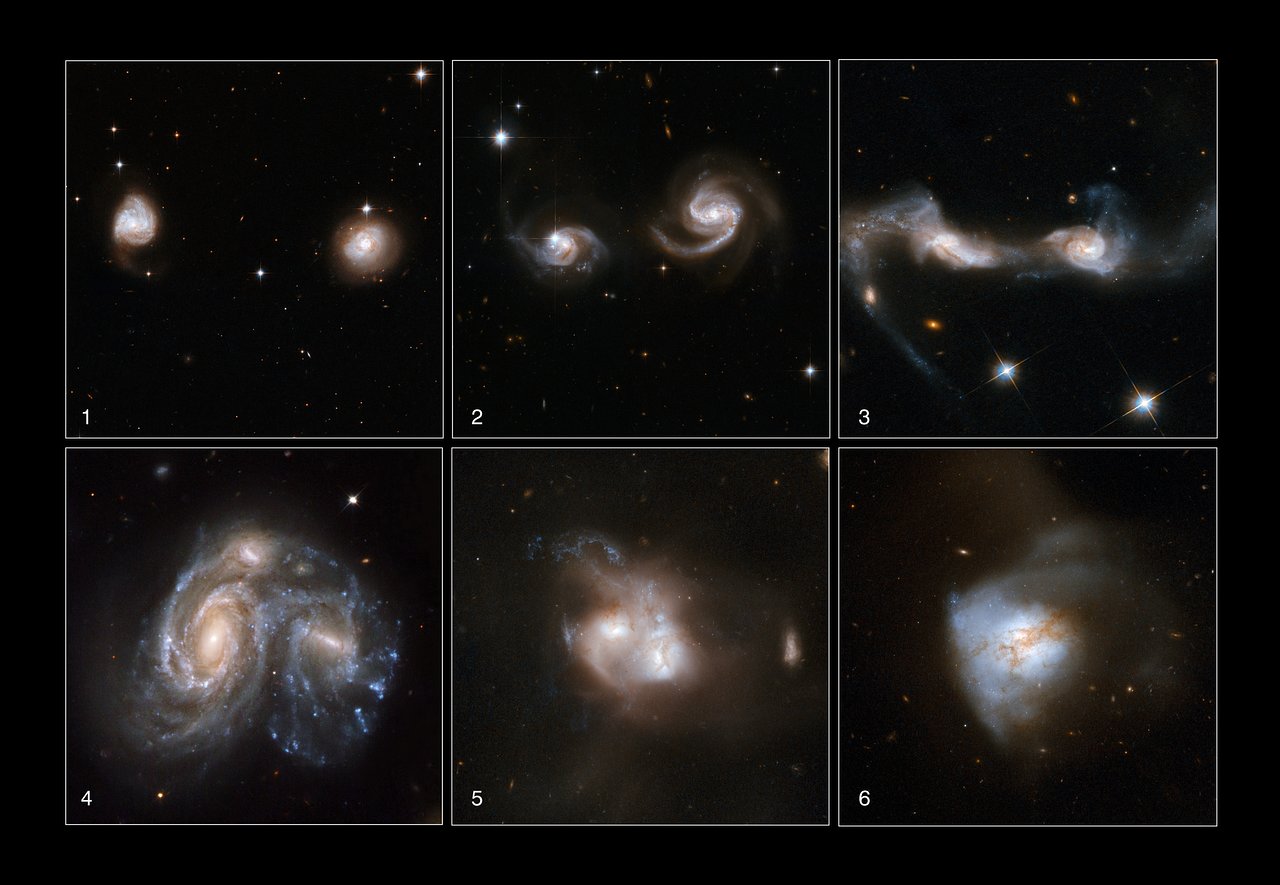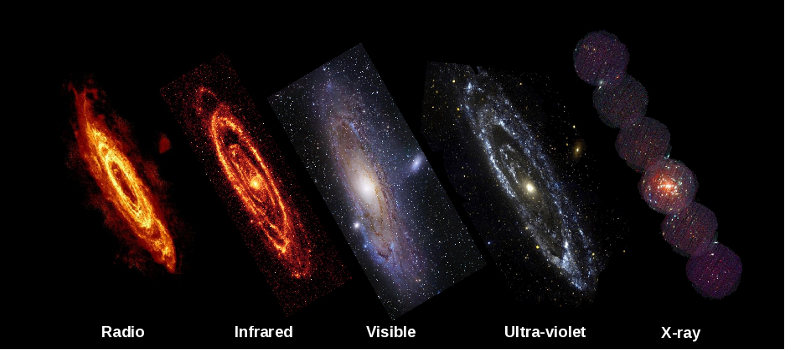Section 3.3.2: Will the Milky Way ever be involved in a collision?
Section 4.3.2: Will the Milky Way ever be involved in a collision?
Our own galaxy, the Milky Way, is part of a group of about 30 galaxies called the Local Group. Many of the Local Group members are small dwarf galaxies but there are also three spiral galaxies - the Milky Way, the Andromeda galaxy (M31) and the Triangulum galaxy (M33). Observations have shown that the Milky Way and M31 are heading directly for each other and will first collide together in about 4 billion years time. It is possible that M33 will also be involved in this collision, although astronomers aren’t as confident about this. In the activity later on, there is a video showing M33 continuing to orbit the merging system instead.
To work out whether the Milky Way and M31 are are on a collision course requires careful observations of M31’s motion relative to us. We can work out how fast a galaxy is moving towards or away from us by measuring how much its light is shifted to the blue or red end of the spectrum (see Section 5.1.1). For over 100 years, we have known that the Andromeda galaxy is coming towards us, as we see its light is “blue-shifted”. However, the difficult part is working out how much the galaxy is also moving to the side. This will make the difference between a head-on collision and a near-miss. By observing M31 repeatedly over seven years, astronomers have recently concluded that a collision between the two galaxies is inevitable.
ACTIVITY: The video below is based on NASA's observations and simulates the collision of the Milky Way and M31.
nasagalaxycollision.mp4Video player: nasagalaxycollision.mp4A simulation showing the merger of our galaxy with M31 (visualization credit: NASA; ESA; and F. Summers, STScI | simulation credit: NASA; ESA; G. Besla, Columbia University; and R. van der Marel, STScI)
As the above video shows, when the Milky Way and M31 collide they won’t immediately merge together. Instead they pass through each other a few times, their shapes becoming distorted, before finally merging together to form a giant elliptical galaxy. This is because the galaxies have too much mass and are going too fast to be stopped dead in their tracks. Shown below are examples of galaxies at different stages in this process.

Merging galaxies at different stages in the process. (credit: Left to Right:NASA, ESA, the Hubble Heritage Team (STScI/AURA)-ESA/Hubble Collaboration and A. Evans (University of Virginia, Charlottesville/NRAO/Stony Brook University), K. Noll (STScI), and J. Westphal (Caltech) )
The distances between stars in galaxies are so large compared to their size that it is pretty much impossible for two stars to hit each other during a galaxy collision. However, the position of stars within the galaxy can dramatically change as they experience different gravitational pulls during the encounter. It’s extremely hard to work out what will happen to the Sun (and therefore the solar system) during the collision. Simulations show that one likely scenario is that the Sun will be pushed out further away from the centre of the galaxy. However it is also possible that the Sun will transfer to the Andromeda galaxy during the merger, or that it will be flung out of the galaxy! While life as we know it will be long-gone from Earth by then (due to the increased heat from the Sun incinerating our planet!), the below images show what the merger will look like from our current position in the Milky Way.
 Simulations of the night sky view as the Milky Way and Andromeda collide and merge. (credit: NASA; ESA; Z. Levay and R. van der Marel, STScI; T. Hallas, and A. Mellinger)
Simulations of the night sky view as the Milky Way and Andromeda collide and merge. (credit: NASA; ESA; Z. Levay and R. van der Marel, STScI; T. Hallas, and A. Mellinger)
Although the collision with Andromeda is a major event that will forever change the Milky Way, it is not the only interaction that our galaxy will be involved with. Even now, observations from the Sloan Digital Sky Survey suggest that the Milky Way is interacting with the Sagittarius Dwarf Galaxy, one of the small galaxies that surrounds it (known as satellite galaxies). As the Milky Way is much more massive than these satellite galaxies, any interactions with them will not really affect the morphology of the Milky Way, but it can severely change the structure of the satellite galaxy.
ACTIVITY: Click here to watch a short video showing more galaxy collisions, observed by the Hubble Telescope.

